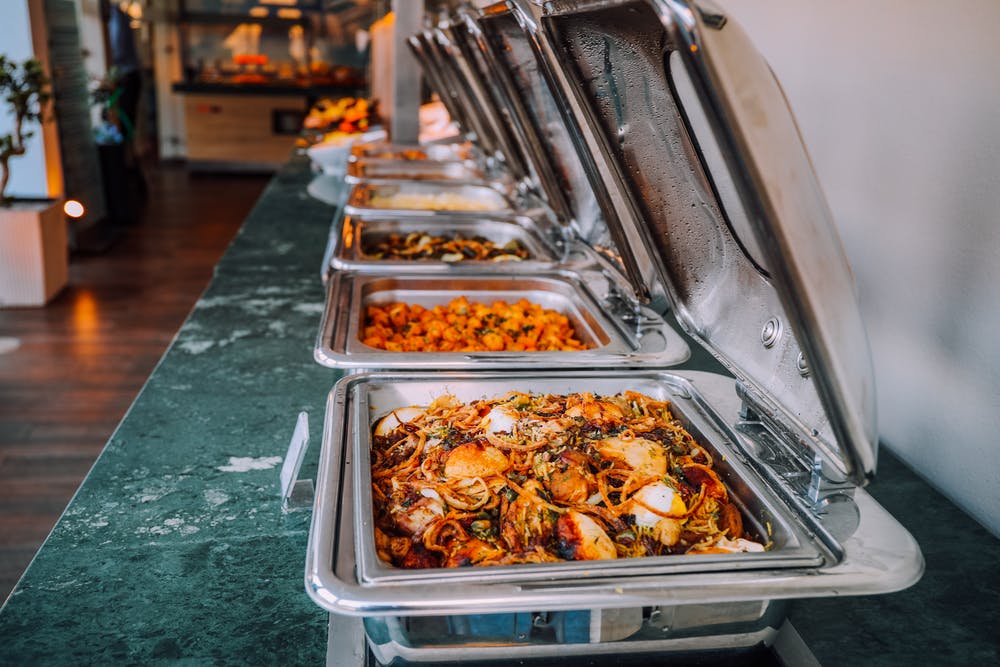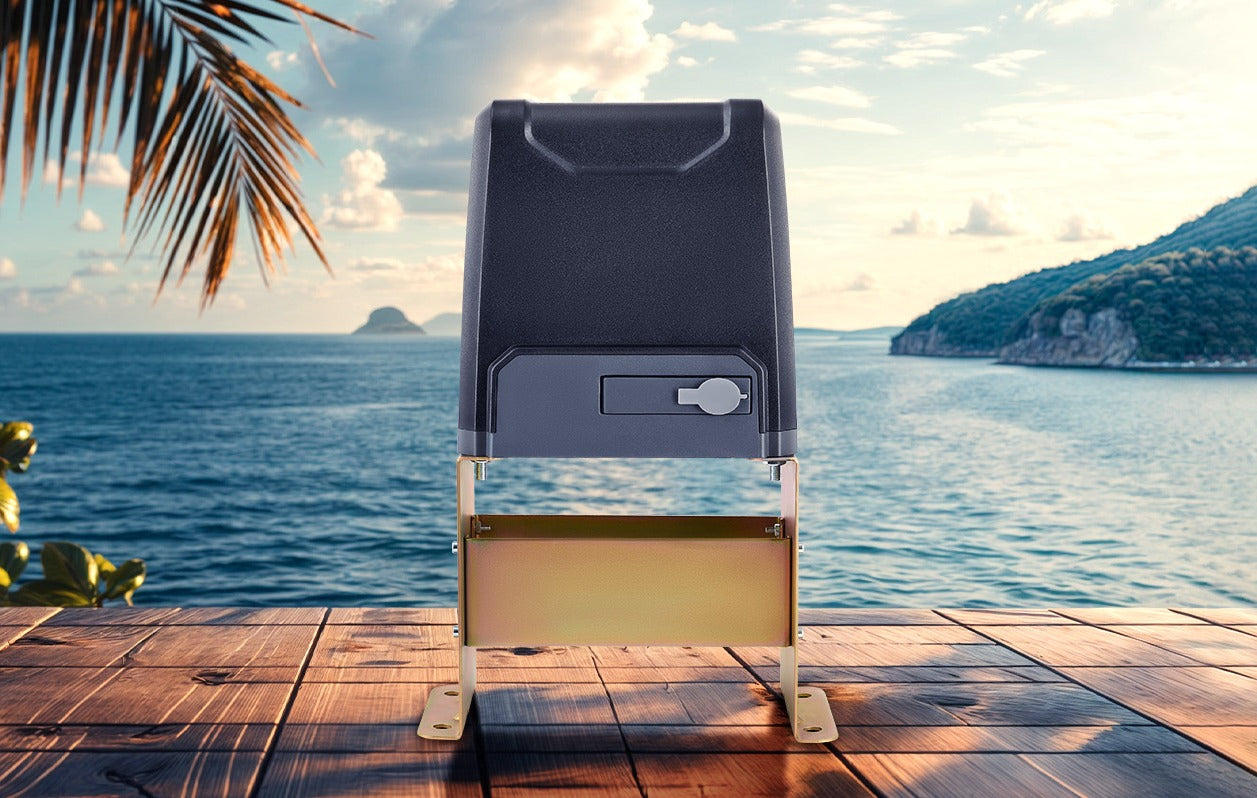A Chafer Chafing Dish is often referred to in the catering world as the "host's best friend" because it can keep your food warm for hours on end, and if you're hosting a dinner party or special event, setting up and using a chafer chafing dish can allow you to serve heated food for hours on end! Set your baking sheet safely on your table to prevent burns or spills, and after serving, wash your baking sheet thoroughly with warm water and detergent so it's ready to use when you need it next time!
Part 1: Placing the baking sheet
Place the food and water on the chafer chafing dish!
Most chafing dishes consist of 4 main parts: a food dish, a water dish, a stand and a lid. Place the water dish on top of it first, then the food dish on top, the lid will be used later when you need to cover the food to keep it from getting cold.
Set up your chafer chafing dish directly where you plan to serve the food!
The chafer chafing dish is hot when in use, so you can avoid burning your hands and inconveniencing yourself or your guests by placing your baking dish upright on the table where you will be serving food for your safety.
Please avoid placing your chafing dish on anything flammable, such as a plastic tablecloth.
Protect your chafer chafing dish from the wind!
Sudden gusts of wind can blow out the flame of your chafing dish. If serving in cloudy or windy weather, cover three sides of your chafing dish with aluminum foil, which will protect your chafing dish's flame from the surrounding weather! Heavy-duty aluminum foil is ideal!
Pour hot water into the water dish of your chafer chafing dish!
Make sure it's on a flat, stable surface to avoid spills. The water should be hot enough to scald (so be careful when pouring), but not boiling. Pour 1-3 inches (2.5-7.6 cm) of hot water into the bottom, depending on the specific instructions for your chafer chafing dish.
- Most fryers require at least 1/2 inch (1.3 cm) of water into the base. Check the specific instructions for your chafing dish to determine how much water it needs.
- Bringing water to a boil on the stove before pouring is the easiest and most efficient way to warm water.
Add burner fuel to the opening of your chafer chafing dish!
Most chafer chafing dishes are gas-powered. Follow the markings on your chafing dish to twist open the opening for the fuel and add the indicated amount. Be sure to read your chafing dish's instructions thoroughly beforehand to avoid adding the wrong type or amount of fuel.
- Never add fuel to an already lit burner.
Light your chafer chafing dish!
Before you light the burner, check for any fuel spills, drips or leaks. If you don't find any problems, light both burners. The way you light the burners may vary depending on your model: for some models, you can press a switch, while for others, you'll need to use a match or lighter. For specific ignition instructions, consult your griddle's manual.
- Wash your hands before attempting to light the burner or handling food afterwards.
- Always use caution when lighting burners.
Cover the sautéed food with the lid of the pan for about 10 minutes!
Leaving food in a cold, unheated pan may lower its overall temperature. Wait until the wok is heated before adding food, especially if your dish must be served hot, not just warm.
Part 2 Serving with a chafer chafing dish
Heat the food to the proper temperature before you put it in the pan!
The chafer chafing dish does not cook the food, it regulates the temperature. All food, especially raw food, should be cooked before serving it in your skillet. When you add it to the pan, your food should remain at the same temperature when you serve it.
As long as you check the temperature of your food about every 25-30 minutes when you serve it, you'll be serving delicious hot food to your guests for a long time!
Transfer your food to the chafer chafing dish!
When you are ready to place your food, carefully place them in the chafer chafing dish. Use oven mitts or a dry cloth to hold the food tray as you place it in the chafing dish so you don't burn your hands.
Please check and stir your food in the baking dish regularly!
Leaving food unattended in a baking dish can cause it to become damp and tasteless. Check your dish every 10-20 minutes and assess its appearance. If the food looks stale or soft, stir it with a serving spoon to make it look more appetizing.
Use lids to keep food fresh!
Leaving your food exposed for too long can cause your dish to lose moisture. If you plan to leave your food in the baking dish for more than an hour without serving it, covering it will help your food retain moisture, and please continue to check your food regularly to maintain its appearance and flavor.
Assess your food for signs of dryness!
You may not be able to keep the lid on your food when it's served, but exposure to air puts it at risk of drying out. If your food looks too dry, add more water to the bottom of the stir-fry pan, which will restore moisture to the food and help it maintain the desired flavor.
- How much water you add depends on how much food is in the stir-fry pan. Don't start with too much (1 or 2 tablespoons), and if your food is still dry, add more.
Hold your chafer chafing dish in an upright position!
If the unexpected happens, you may need to transport your chafing dish. Hold each side of your baking dish in an upright position to prevent spillage. When you move equipment from one place to another, go slowly and carefully.
- If you feel uncomfortable moving the entire frying pan at once, it will be easier to move it in stages. Take the lid, water and food pan and stand in an upright position as you move it to another location.
- Blow out the flame of the machine before you carry it anywhere.
Part 3 Cleaning the chafer chafing dish
Start cleaning with warm water and a soft cloth!
For general cleanup and light food stains, disassemble your skillet and clean the pan separately over the sink. Use a soft microfiber cleaning cloth.
Use dish soap or detergent and water together!
If you can't remove food stains with just water, use a mild dishwashing detergent or dishwashing liquid with warm water. Dip a towel into warm, soapy water and rub the dishes in a circular motion until the food stain is removed.
- Avoid using detergents that contain chlorine or ammonia, as both will corrode your dishes over time.
Use a special scouring pad to scrape off hard-to-clean areas!
Scouring pads remove stubborn food stains without corroding your pots and pans like heavy-duty cleaners do. Avoid using steel wool or copper scouring pads, which can scratch baking pans and darken their surfaces.
- A non-metallic scrubbing pad made of plastic mesh is ideal for cleaning baking pans.
Wipe the baking sheet with a hot towel to remove fingerprints!
Warm water may not be enough to remove grease or fingerprint stains. Place a dishcloth over the sink and dampen it with hot water. Wipe off grease stains in a clockwise motion, then immediately dry the baking sheet with a microfiber cloth.
- Add white vinegar or a mild detergent to remove heavy grease stains.
- To avoid fingerprint stains when serving, wear disposable gloves when handling the baking sheet.
Use a steel polish to restore the shine to your dishes!
While you don't have to polish your baking sheet after every use, you can use polish whenever your baking sheet looks dull or scratched. Apply polish with a microfiber cleaning cloth to restore its shine, then dry with a towel to avoid stains.
- Read the instructions on the steel polish container before use.
- Test the steel polish on a small corner of the baking dish before applying it to the entire unit.
Tips
- Wash your hands before touching food or baking pans to prevent spreading disease.
- Cook all food before placing it on a plate for serving. Raw or undercooked dishes can cause food poisoning.
Warnings
- When lighting a chafer chafing dish or serving food, hold your hair back and out of your face.
- Keep flammable decorations, loose clothing and all paper products away from lit hot pans.
Such a detailed guide to using a chafer chafing dish will hopefully provide you with a little help when you use a chafer chafing dish! Chafer chafing dishes have many uses and will hopefully make your parties and various events a colorful one!
Related products:


